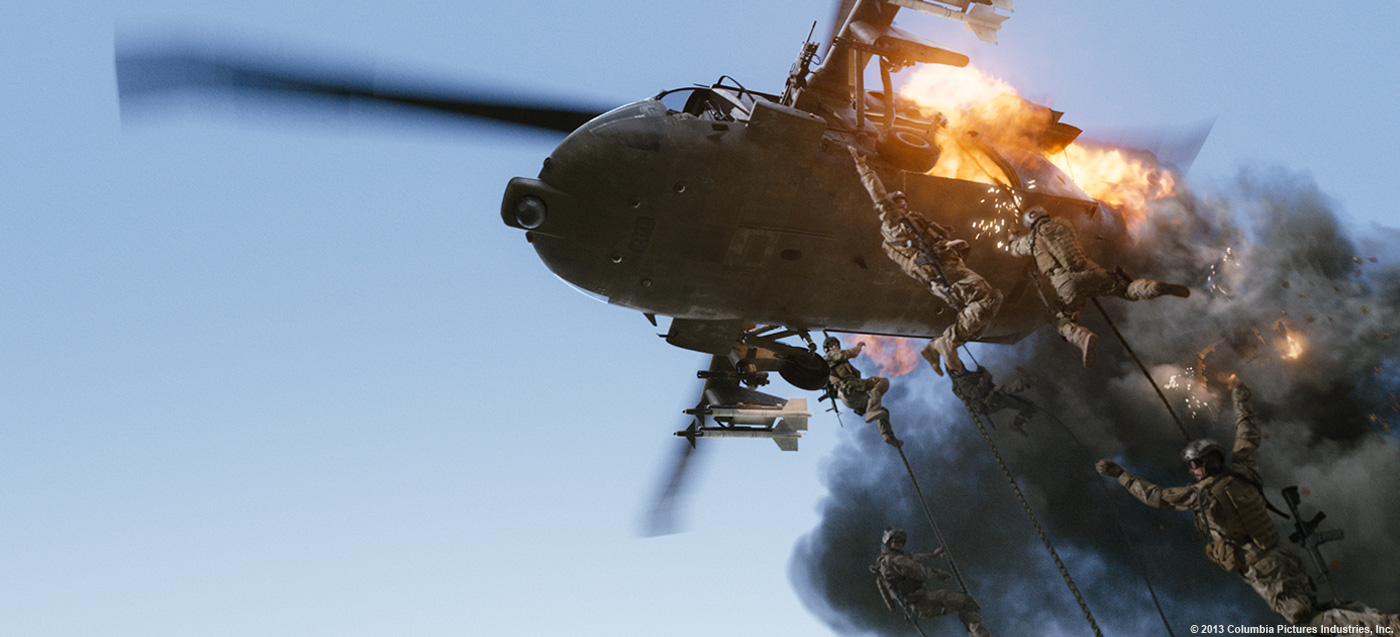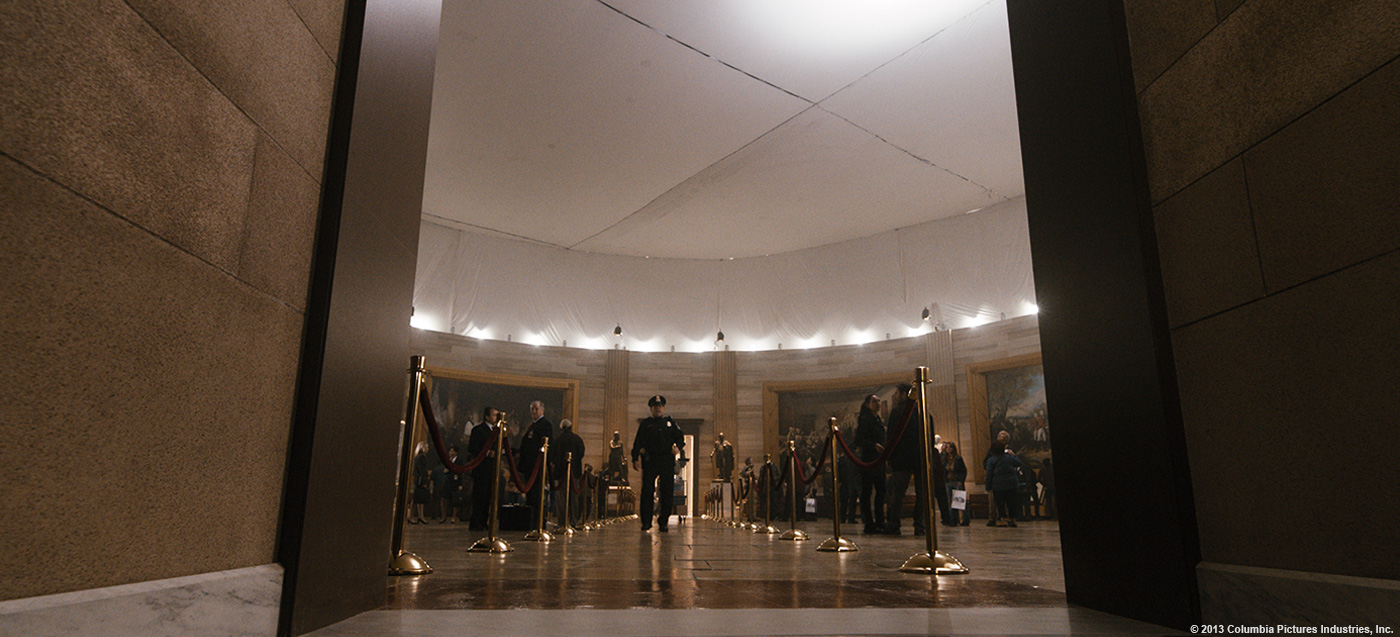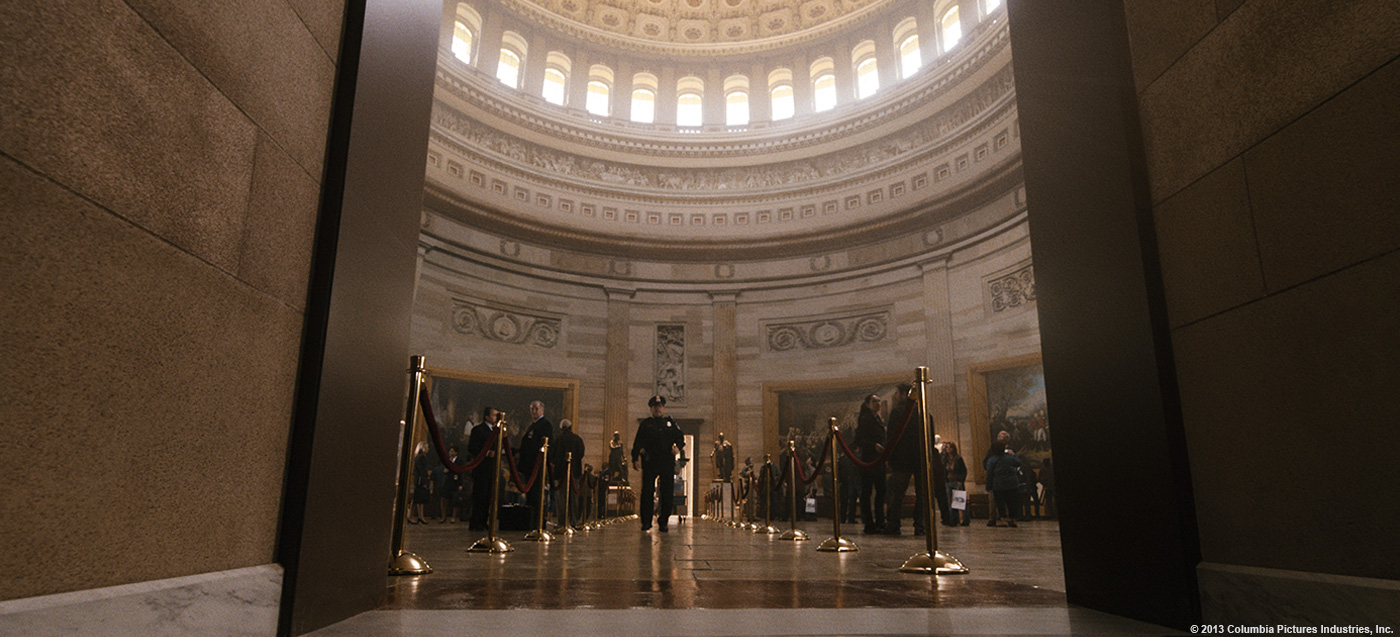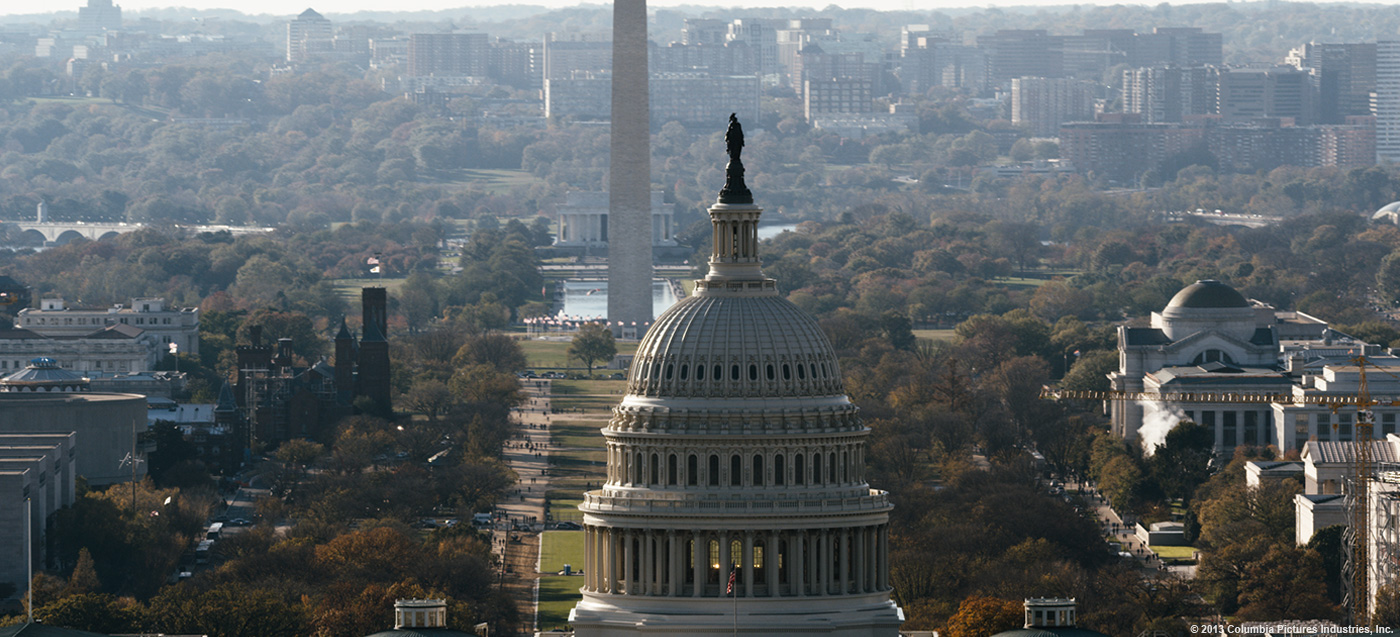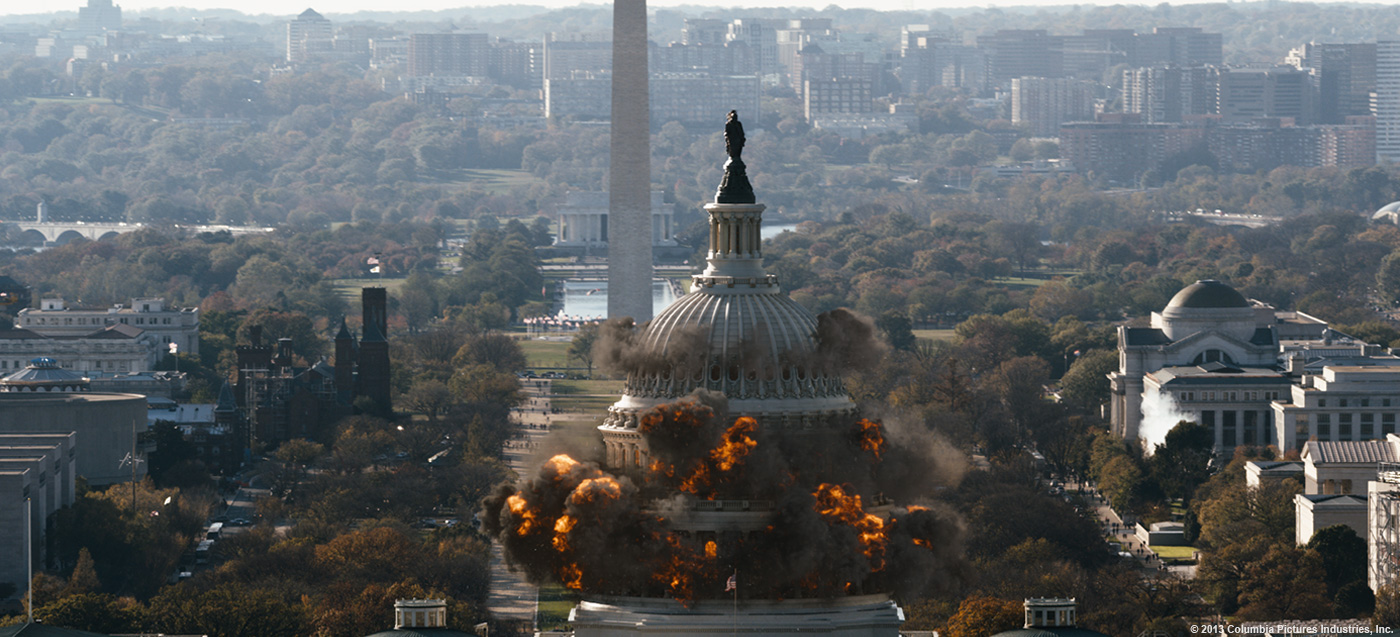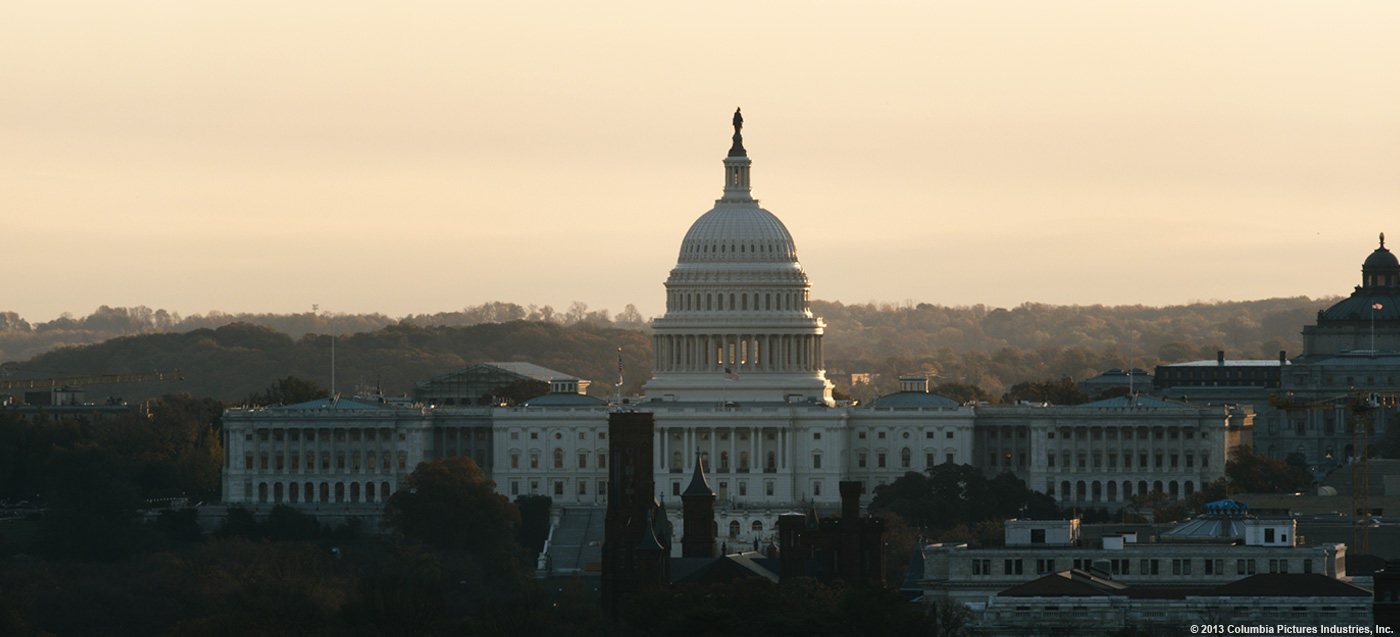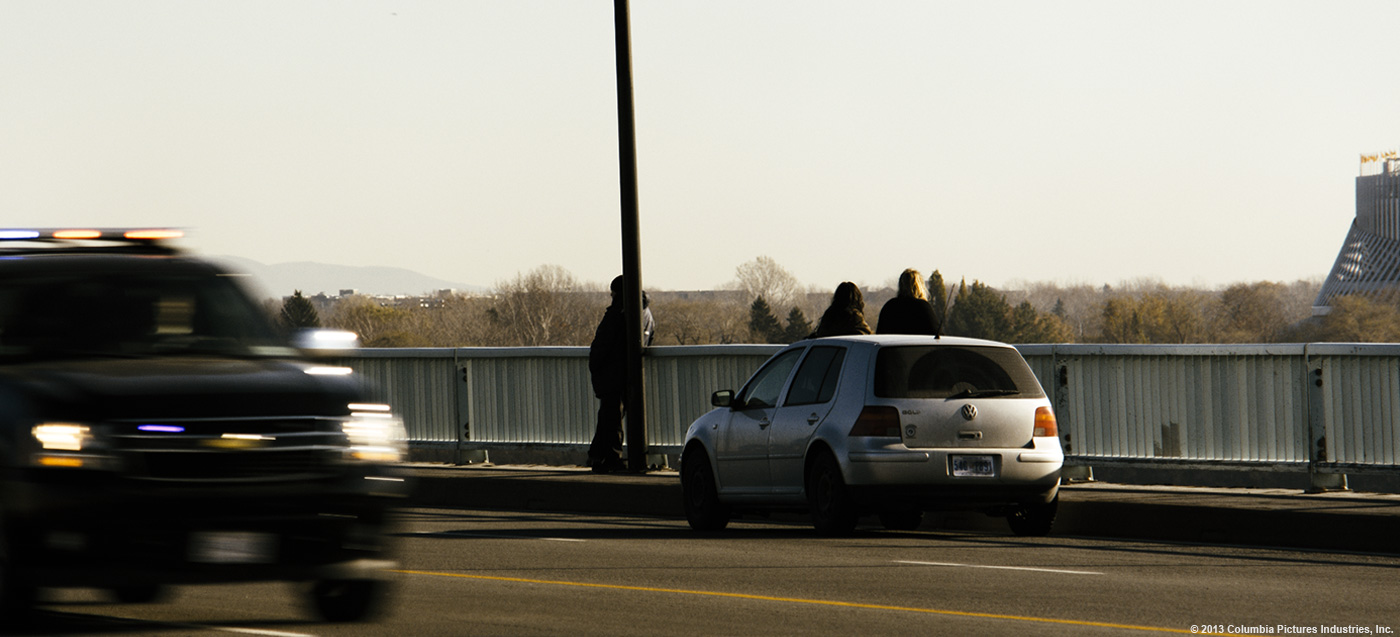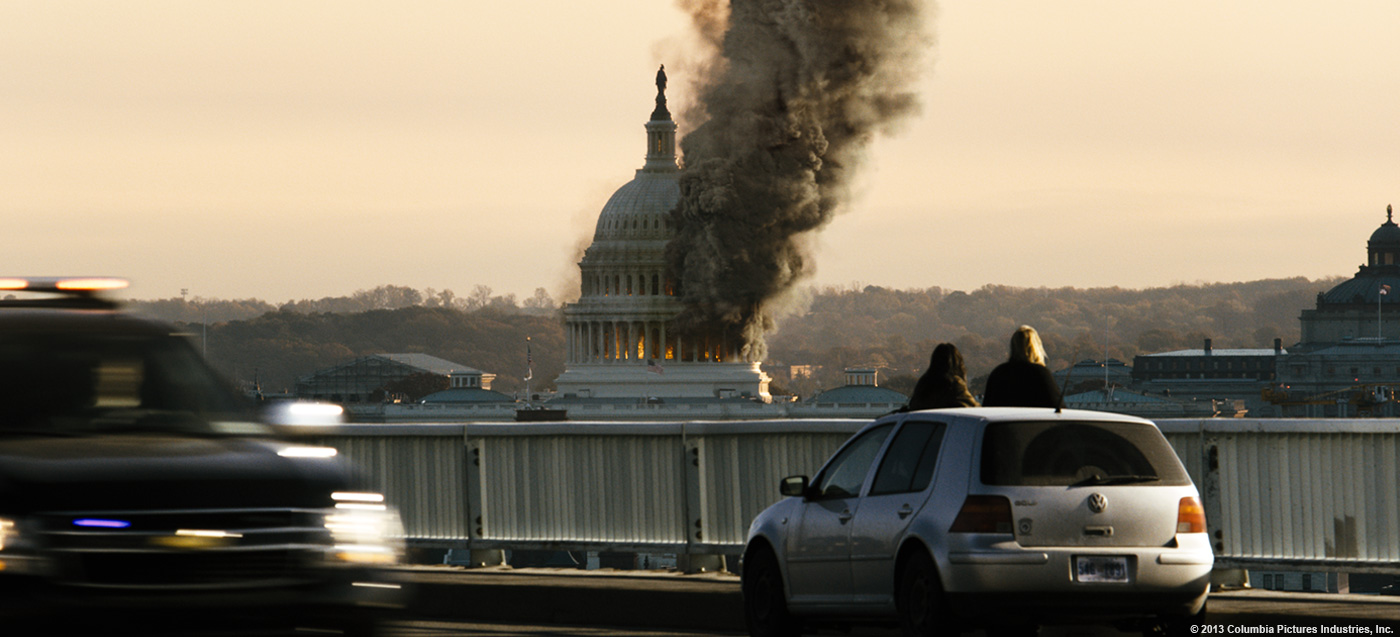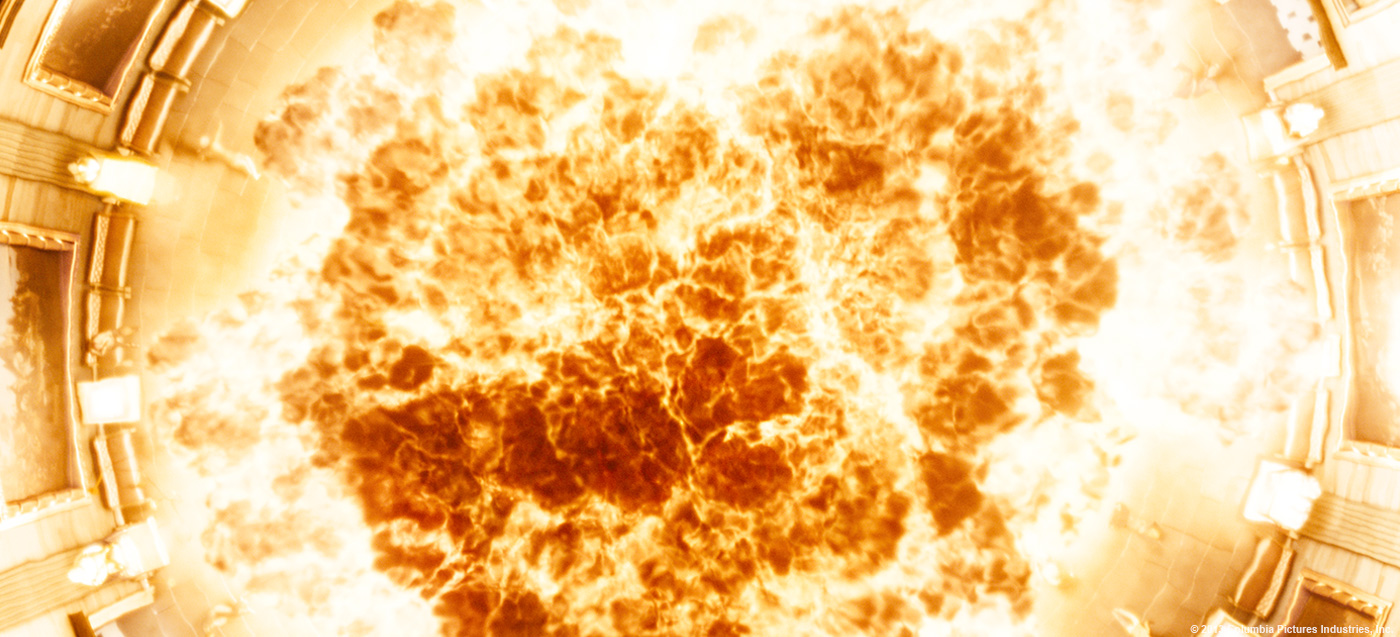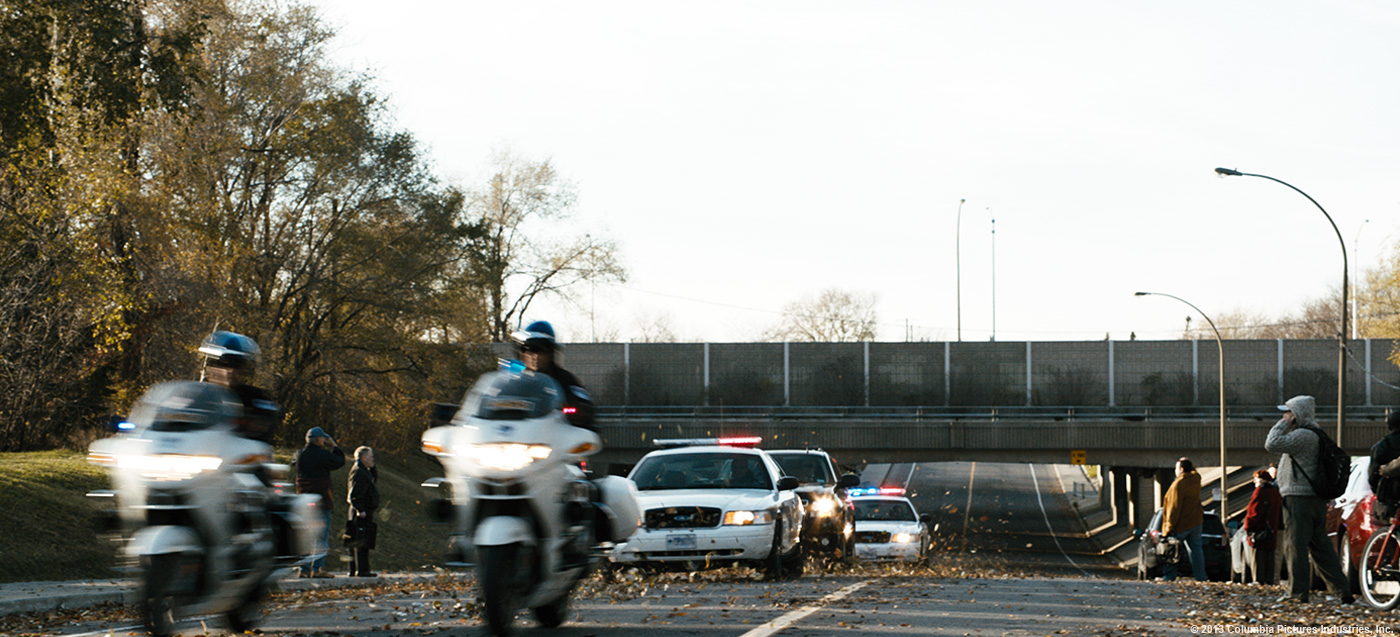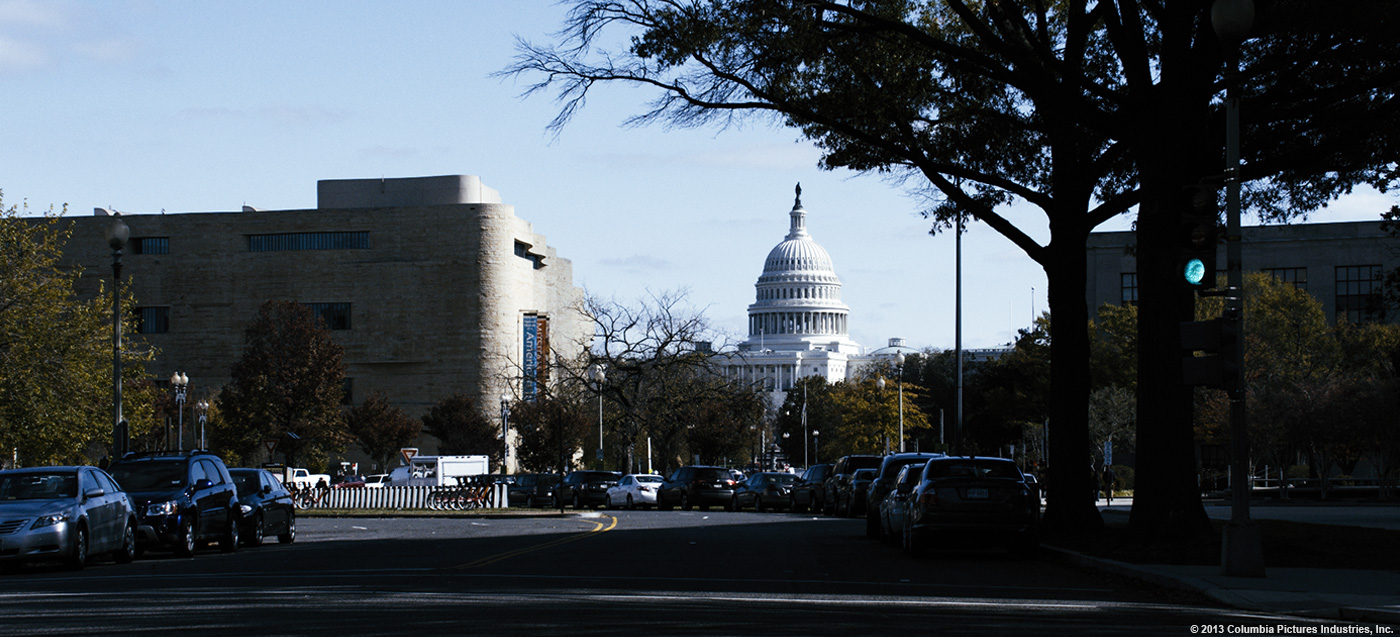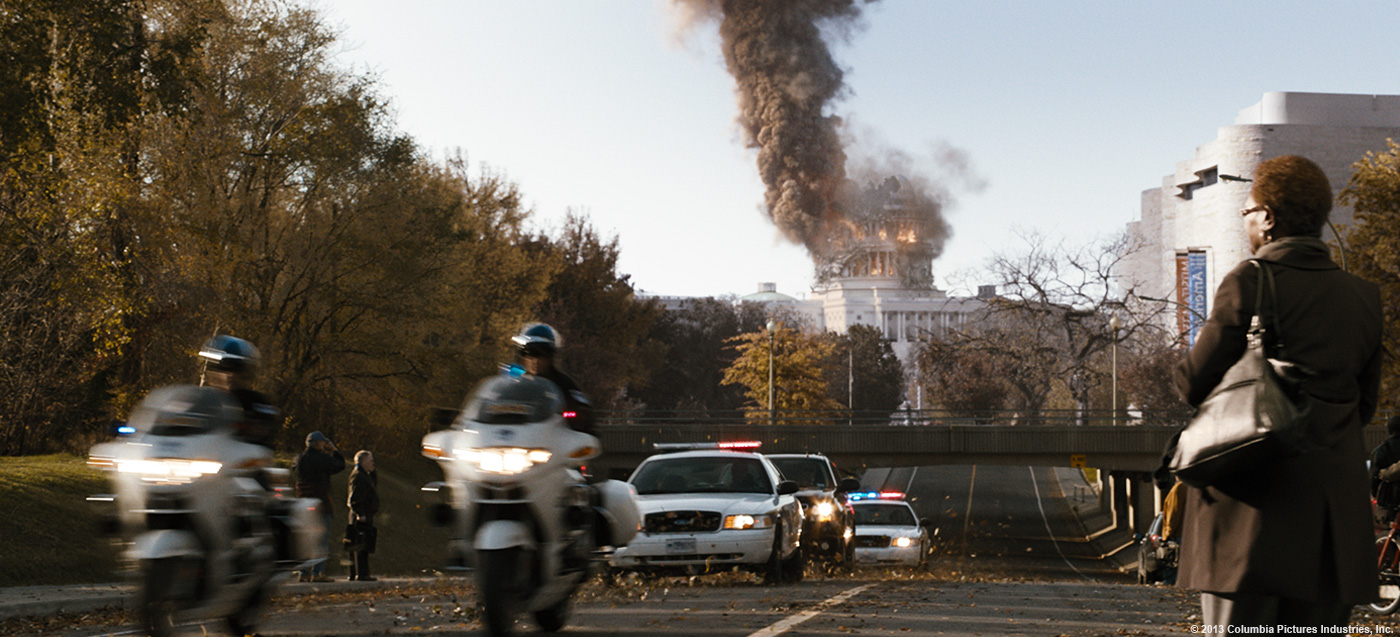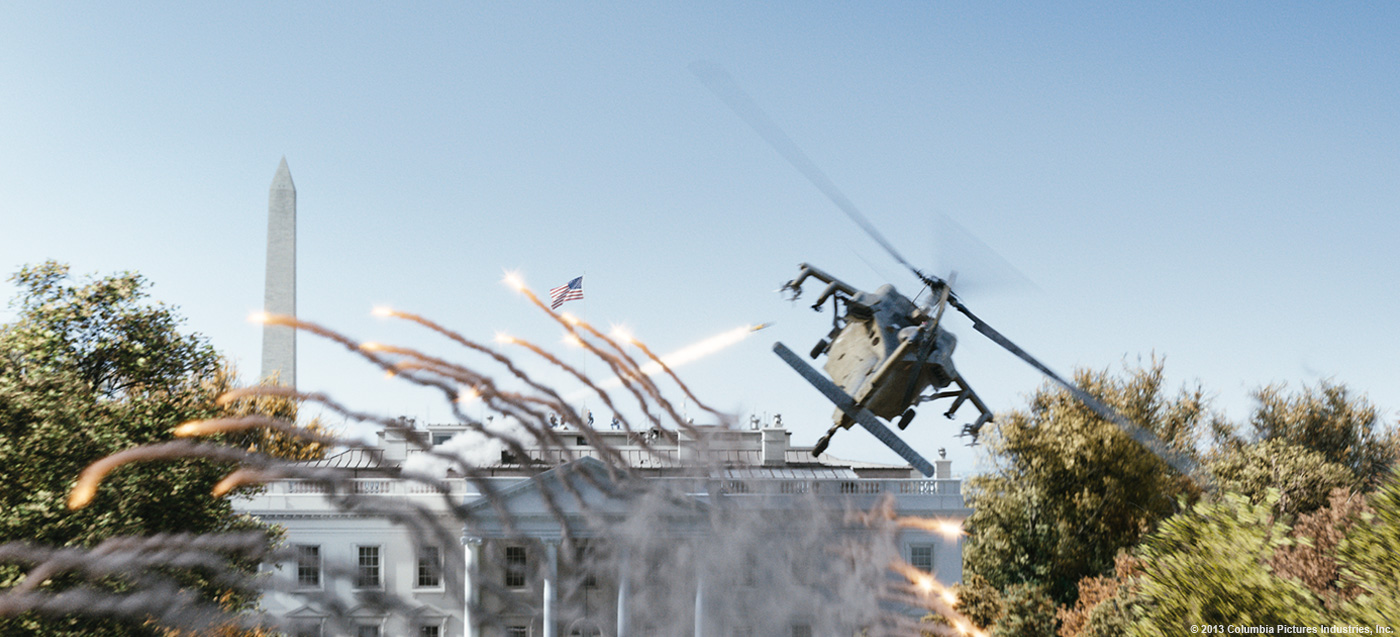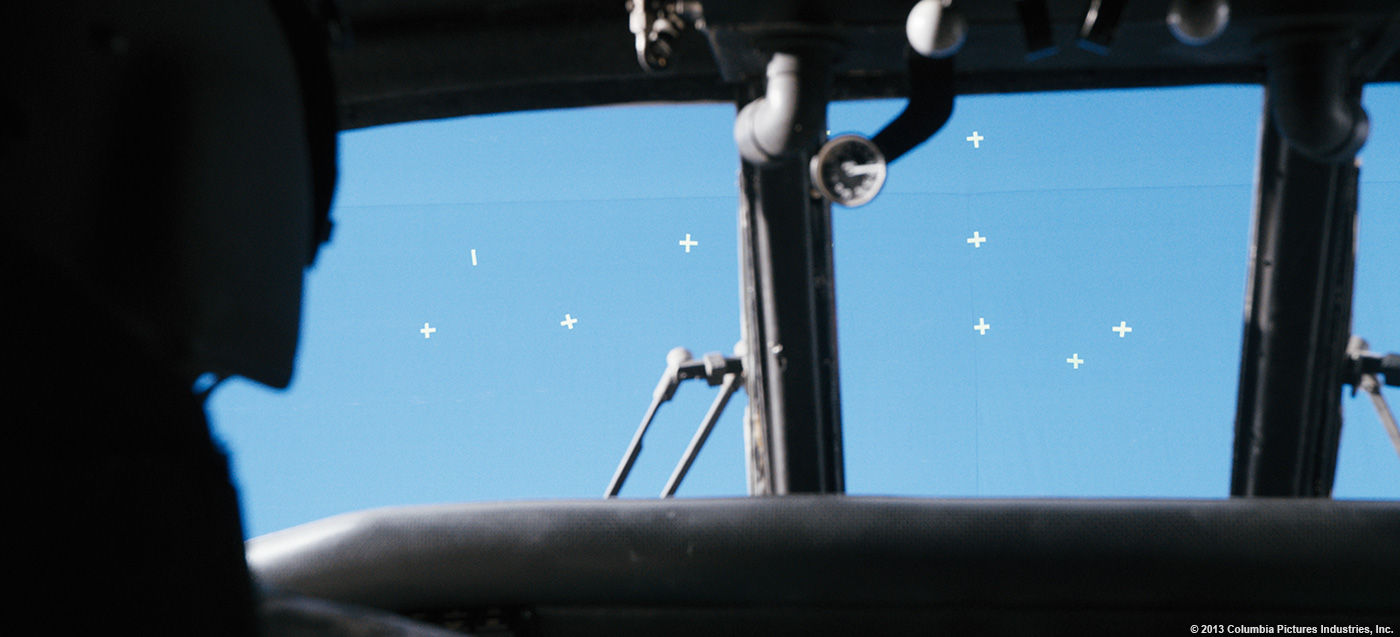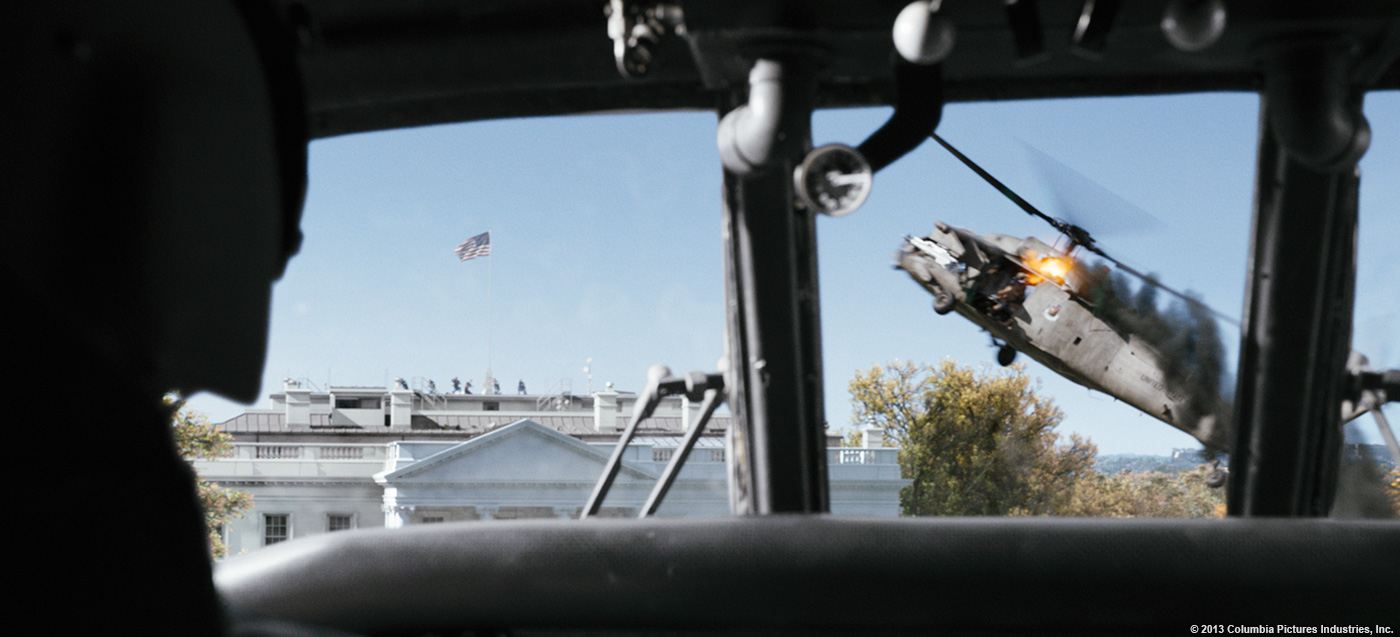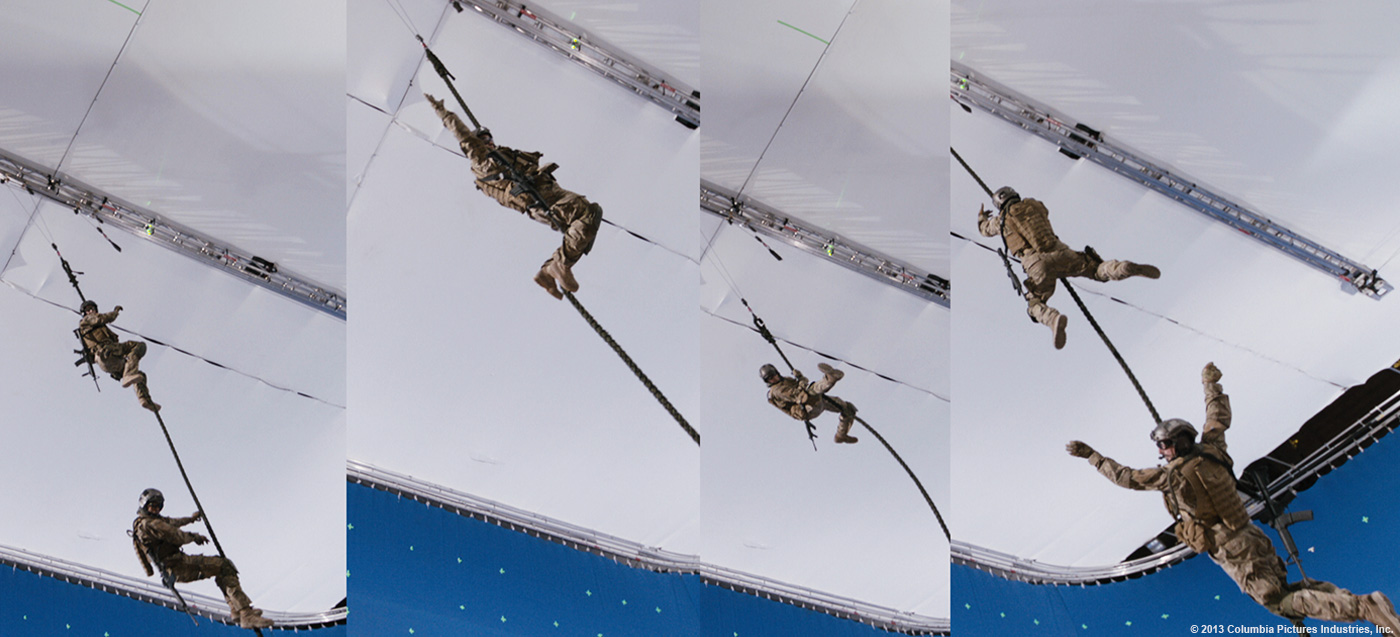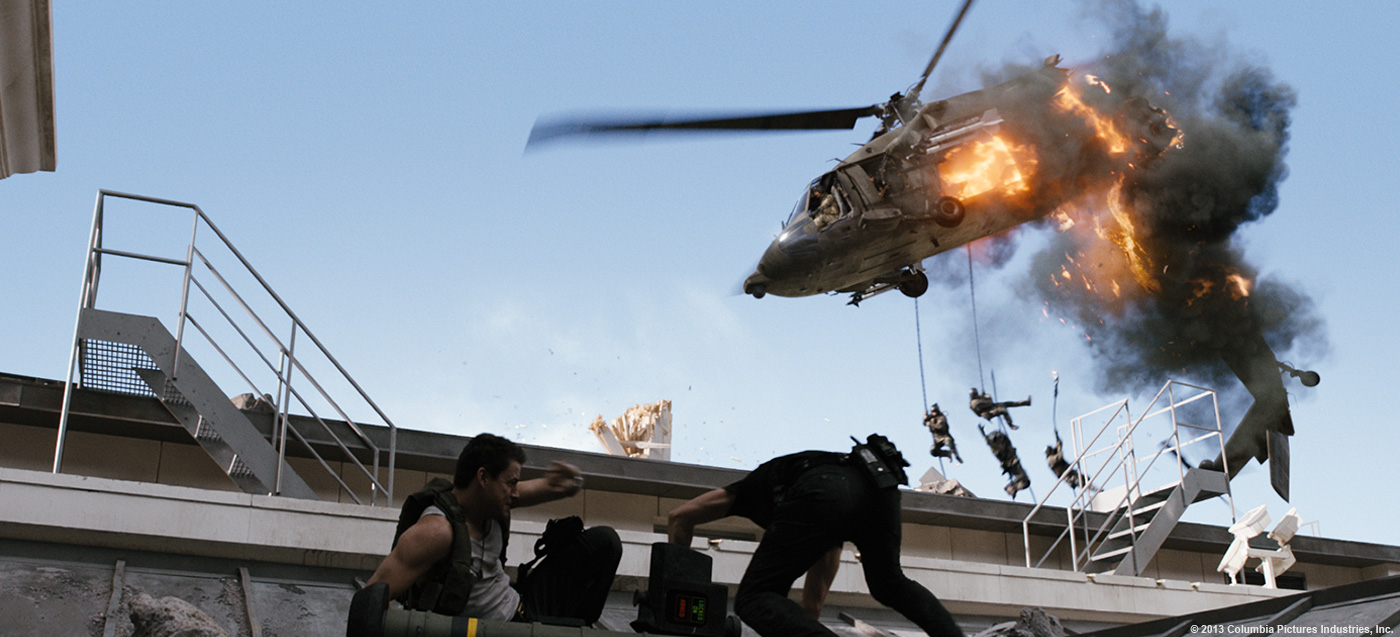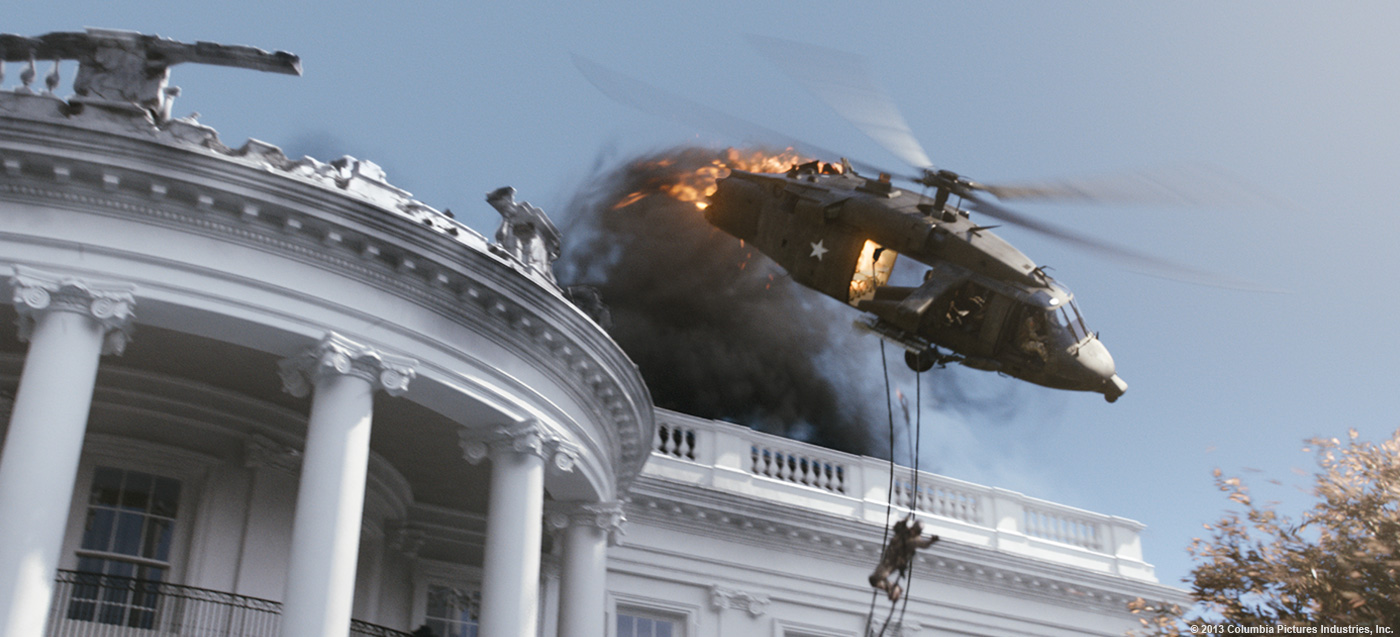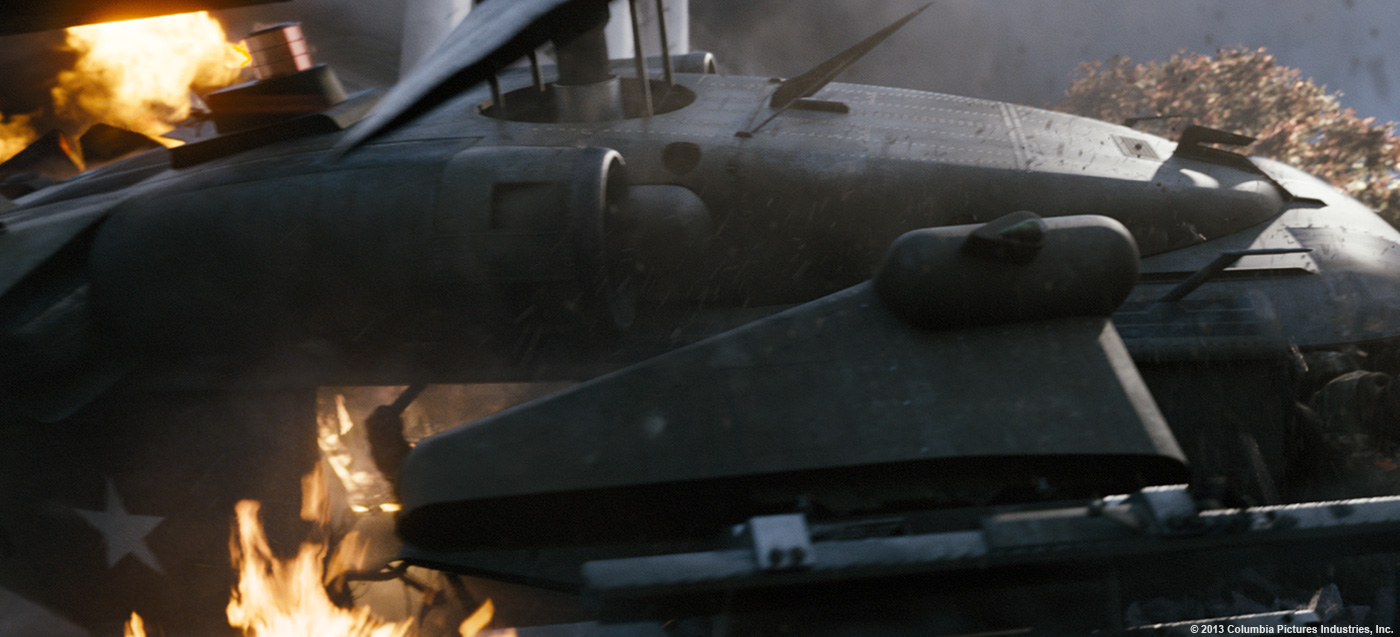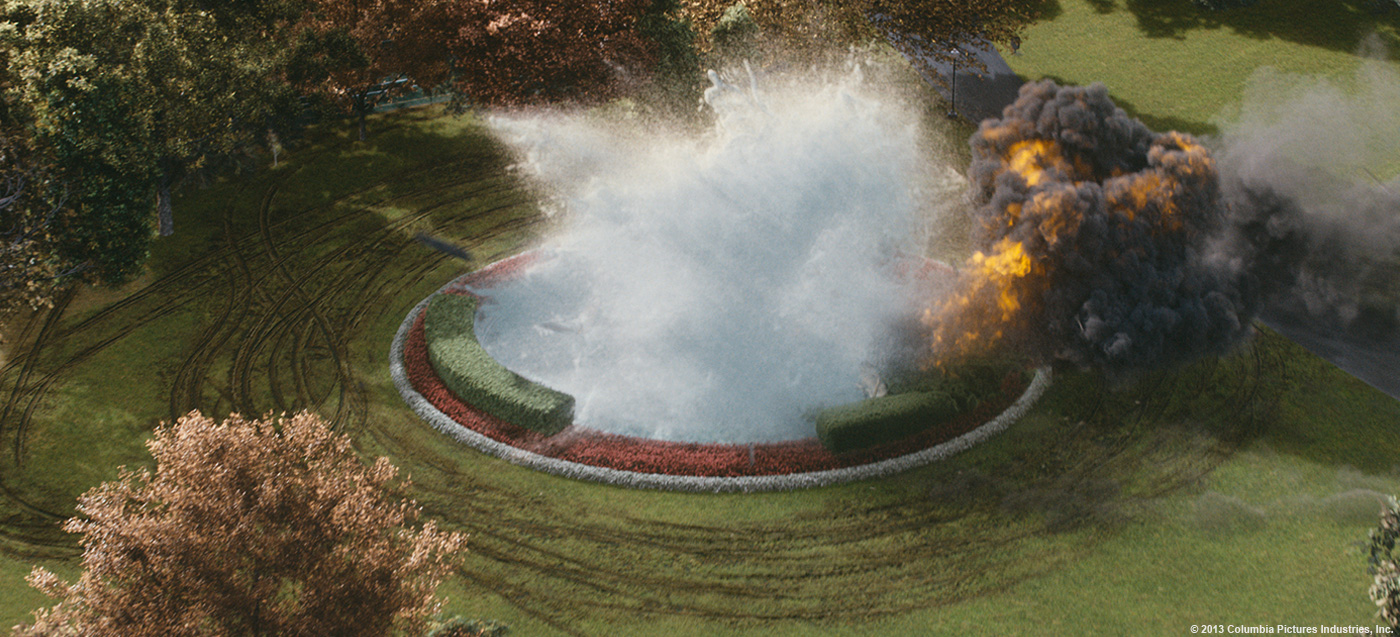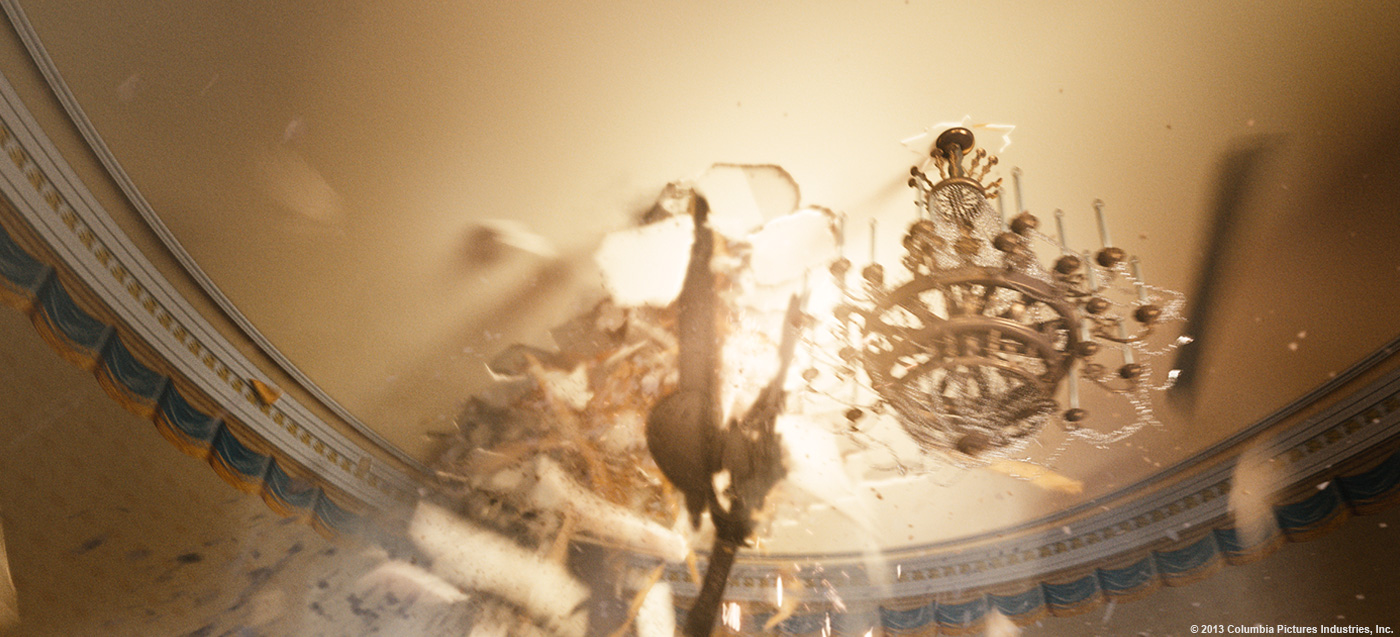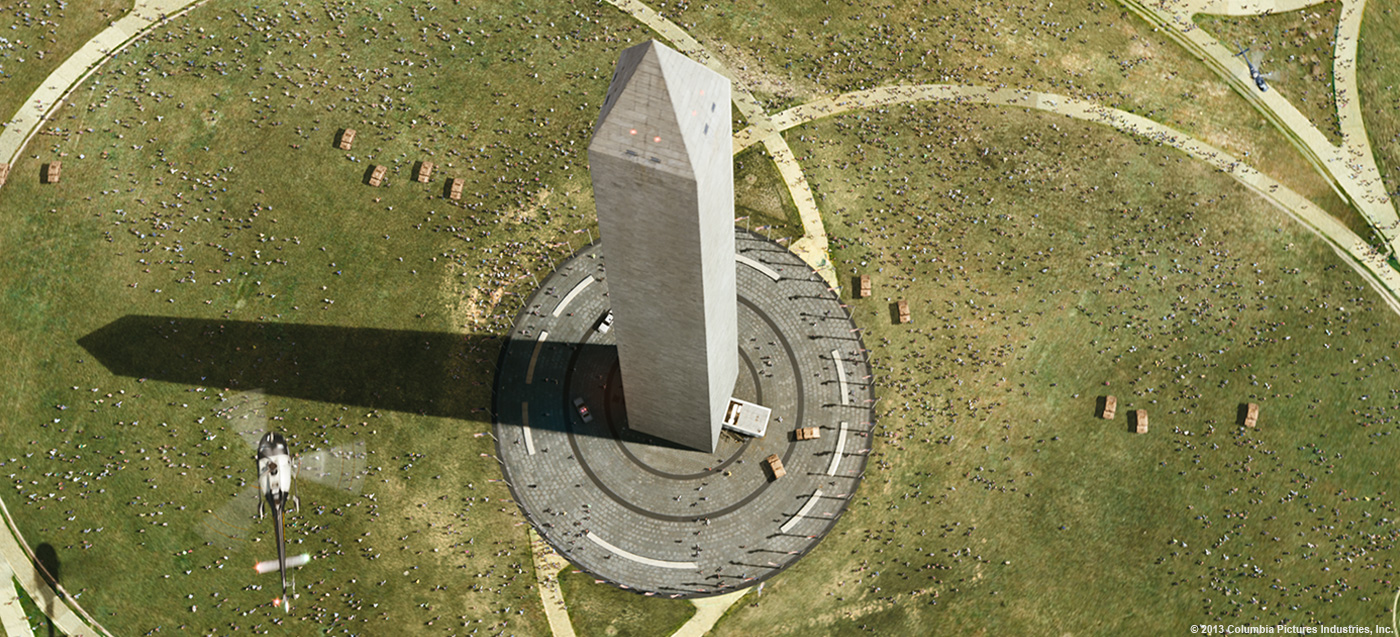Earlier this year, Ollie Rankin explained the work of Method Studios on GI JOE: RETALIATION. Now he explains his work on WHITE HOUSE DOWN.
How did Method Studios get involved on this show?
Having recently delivered numerous visual effects shots for G. I. JOE: RETALIATION, featuring a night-time helicopter gunship raid along with some elaborate pyrotechnics and destruction, we were ideally positioned to bid on some of the most elaborate work required in WHITE HOUSE DOWN. We would also be able to build on the in-house R&D that had been done for the pyro and destruction work on films like ABRAHAM LINCOLN: VAMPIRE HUNTER and WRATH OF THE TITANS.
How was the collaboration with Production VFX Supervisors Volker Engel and Marc Weigert?
The thing I enjoyed most about working with Volker and Marc (and by extension, Roland), was that they allowed us a great deal of artistic input into the shots we were working on. If they hadn’t already gone through multiple revision cycles of a shot’s design in previs, they were generally open to presenting our creative vision to Roland for review and approval. Some visual effects clients are so set on one particular narrow interpretation of a shot that it leaves no room for the visual effects crew to participate in the artistry of bringing the shots to life, but that wasn’t the case at all with these guys.
What have you done on this show?
Highlights of our work include blowing up and collapsing the US Capitol dome in CG as well as blowing up and crashing 3 US Army Blackhawk helicopters into the grounds of the White House and even into the White House itself, once again in CG. We were responsible for numerous large-scale one-off shots (the client’s terminology was “Big Ass Shots”) involving multiple interacting dynamic simulations, along with keyframe animated helicopters and digi-doubles. We were also tasked with recreating the iconic White House in photorealistic CG, along with the surrounding gardens, fountains, trees and neighboring blocks of Washington, DC, all to be shared with 11 other visual effects vendors around the world.
How did you approach the Capitol destruction sequence?
Artists at Trixter in Germany produced concept art of various stages of the dome’s collapse, which Roland signed off on. We then choreographed various simulations to match the progression of destruction that those concept paintings portrayed.
How did you manage this impressive ball of fire?
Our fluid fx R&D team had built a system in Houdini for ABRAHAM LINCOLN: VAMPIRE HUNTER that augmented the pyro capabilities of the particular version of Houdini we were using at that time. Subsequently Side Effects incorporated some of those same capabilities into their new pyro toolkit, but because we already had such a strong head start and rigorous production battle-testing, we found it benefited us to port our tools over to the newest version of Houdini, to give us the best of both worlds. Roland pointed us at one of the practical explosions from the original STAR WARS as a benchmark for the type of movement and shape he was after and we merged together multiple sims to achieve that look. When the explosion expands to blow out the windows, we employed a slightly different approach to get those beautiful rolling fireballs that transition into clouds of smoke.
Can you explain in details about the Capitol destruction?
The CG dome model was broken into pieces by a combination of procedural and sculpted fracturing. Those pieces were choreographed to break and collapse on cue, with subsequent impacts resulting in further shattering into smaller pieces. Layer upon layer of smaller debris, dust, fire and smoke were added, all simulated to interact with each other, to create the whole effect.
Can you tell us more about the White House creation and its environment?
The White House is a difficult building to make look photo-real, given that even photos of it don’t always look real. The material it’s built from and the paint it is covered in give it a hyper-real whiteness that inherits bounced colour from the trees and grounds around it, as well as the sky. We did a lot of work in compositing to balance the subtle nuances of light and shadow and reflected colour to make our CG White House look more real than the real thing.
The trees were the most underestimated aspect of the project in terms of complexity, given the substantial portion of screen space they occupy in a large number of shots and the fact that they always need to move – whether gently blowing in the breeze, being subject to helicopter rotor wash or being crashed into by a helicopter. We used Speedtree to build the vast library of trees that fill the grounds of the White House – some of which are quite iconic and had to be recognizable. Tree animation was generated by a number of approaches depending on the type of the motion required. In some cases we were able to use a 2D warping approach to introduce movement into static renders or photos of trees. For generic, breeze-driven branch and leaf motion, Speedtree’s motion generation was used, while trees being affected by helicopter rotor wash were simulated variously in Maya using Paint Effects or by a proprietary approach using wire deformation within Houdini.
How did you used Nuke and Mari on this show?
We created a 360 degree matte painted cyclorama of the Washington DC skyline surrounding the White House, including layers of trees and buildings at different distances and a card representing the Washington Monument. With a full 3D camera track of each shot, we were able to run projections live in Nuke and therefore completed many shots without any custom CG being rendered for them.
This was our deepest foray into Mari to date. We used it for almost all texture work and took advantage of it’s script-ability, to adhere to both our colour and asset pipelines. We also leveraged the UDIM scheme for uv layout that Mari and other packages support for allowing more genericity of material definitions and assignments.
How did you approach the Black Hawk crash sequence?
This sequence was turned over to us with a good deal of previs already undertaken, so the overall choreography of the sequence was mapped out in advance. However the specific details of the crashes were left to us to design and we had a lot of fun doing so. We animated the helicopters and crews in Maya, and had a custom Blackhawk rig, per shot, to handle the progressive accumulation of damage, as various impacts break different parts off the helicopters, dent panels on the fuselage, buckle and break the rotors and shatter the windows.
How was filmed the crash shots especially the one with the deltas?
The vast majority of the shots in this sequence were either fully CG or only included a small portion of practical footage. The art department had built a partial helicopter set piece which was used for medium shots and close-ups of the crew’s dialog and reactions, but most of the time the helicopters and crew were all CG. The exception is the few shots that deal with the third helicopter being hit as soldiers are rappelling from it, down ropes. These soldiers were shot on bluescreen and during the shoot a live test comp was performed over the previs to make sure the perspective was approximately correct. Then we shifted them around quite a bit in Nuke once we comped them in with our burning CG chopper.
How did you manage the fire and smoke for the crash?
The same pyro toolset we had employed for the Capitol explosions was also used for the explosions, fire and smoke of the Blackhawks. The speed that the helicopters were moving and spinning and the fact that the rotors needed to interact with the fire and smoke required a lot of little cheats to pull off successfully.
Can you tell us more about the impressive crash in the fountain?
We went through a number of revisions of the helicopter animation for this shot, trying to leave the audience in no doubt that the occupants would be dead, without it being too gruesome. Once the helicopter animation was approved it was a matter of running the various simulations for the ground, hedge and water interactions, which were mostly done in Houdini. The only practical element in the shot is footage of the north lawn fountain which is tracked in 2D to sit within the CG south lawn fountain surroundings up until the moment that helicopter crashes into it.
How did you work with the other VFX studios?
For the most part it was a one way street where we passed off our in progress and completed CG assets to the other vendors, but there were also a handful of shots were we comped renders provided by other facilities, and vice versa.
What was the biggest challenge on this project and how did you achieve it?
The crashing of the first Blackhawk was our single most challenging shot in the entire film and correspondingly, the last one to be completed. It features a burning, smoking Blackhawk, spiralling over the roof of the White House, slamming into the ground, then crashing into a tree directly in front of camera, breaking apart amid a big explosion, before continuing to carve up the ground as it comes to rest. The final comp for this shot uses around 150 rendered elements, each with multiple layers.
The White House and background trees are a relatively straightforward component of the shot, while the complexity of layering together the helicopter and dynamic tree, along with all the interleaved fx elements of smoke, fire, explosion, dust, debris, dirt, leaves and blades of grass, required us to adopt a deep raster approach. By rendering “deeps”, we retained 3D positional information from the renderer in the resulting images, allowing Nuke to deduce the correct layering order for each element. The helicopter and pilots were animated in Maya, with a custom Blackhawk rig built to handle the progressive accumulation of damage, as various impacts break different parts off the helicopter, dent panels on the fuselage, buckle and break the rotors and shatter the windows. The smoke, fire, explosion, dust, debris, dirt, leaves and blades of grass were all simulated in Houdini and rendered in Mantra, while the helicopter vs. ground and helicopter vs. tree interactions were two unique and challenging R&D projects unto themselves.
We experimented with using nCloth in Maya to represent the ground, being torn up by the helicopter body and rotor blades, with the torn-up sections of cloth being transferred into Houdini to be procedurally extruded and displaced to give the soil thickness and dressed with grass. We tried fur, curves and settled on instanced nurbs surfaces for the grass. This combination produced some very believable looking clods of earth, but nCloth made for a chaotic and difficult to choreograph ground destruction simulation. In the end we settled on an approach using keyframed ground deformation and particle emission of debris at impact points and along collision surfaces. The work we had done for extruding, displacing and dressing the soil with grass still applied. The hero tree was based on a Speedtree export that was reverse engineered and entirely reconstructed in Houdini, driven by a combination of wind and collision force wire deformation and rigid body simulation, then cached back out via alembic to Maya for rendering in V-Ray.
Another complexity with this shot was taking account of all the interactive lighting and shadowing you would get from the explosion and layers of debris, dust and smoke. We rendered shadow passes separately where possible to allow the compositor the greatest flexibility in integrating everything.
What do you keep from this experience?
Once again I had the pleasure of supervising a great crew or artists, technicians and production staff at Method and would like to take the opportunity to thank and congratulate them all.
How long have you worked on this film?
8 months.
How many shots have you done?
185.
What was the size of your team?
65.
What is your next project?
I’m currently involved in bidding on a project that I can’t give any details about and am lending a hand, solving some challenges on MAZE RUNNER, a fantasy adventure film that Method is heading up the visual effects on.
A big thanks for your time.
// WANT TO KNOW MORE?
– Method Studios: Dedicated page about WHITE HOUSE DOWN on Method Studios website.
© Vincent Frei – The Art of VFX – 2013

